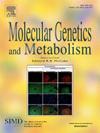250 cases of “type 2 Gaucher disease”: A novel system of clinical categorisation and evidence of genotype: Phenotype correlation
IF 3.5
2区 生物学
Q2 ENDOCRINOLOGY & METABOLISM
引用次数: 0
Abstract
‘Type 2’ Gaucher disease, also referred to as ‘acute neuronopathic’ or ‘infantile’ Gaucher disease is an aggressive subtype of Gaucher disease, resulting from pathogenic variants in GBA1. The spectrum of phenotype ranges from hydropic perinatal presentations to an infantile disease characterised by rapid neurodegeneration. Increasingly, reports are offered of patients who survive into childhood, and it is unclear if these individuals represent a severe form of the type 3 (historically considered ‘juvenile’) disease or have modified outcomes resulting from contemporary medical interventions. Predicting outcome at point of diagnosis is increasingly important to families and clinicians, and while the impact of ‘severe’ or null alleles is appreciated, there remain significant uncertainties surrounding genotype-phenotype correlation.
In an era of clinical trials and endeavors to find CNS modifying therapeutics, there is a need to be able to categorise and predict clinical outcomes more accurately.
Here we report a case-series (n = 13) of internationally referred patients to a single centre, highlighting the spectrum of phenotype encompassed by the single nomenclature of ‘type 2 Gaucher’ disease. From this case-series we propose a new pragmatic, clinical classification system which could be applied to any infant at point of presentation. We subsequently applied this classification system to the historical literature and a further series of historical cases contributed by collaborators across the globe. We collated data from 250 cases, and demonstrate that it is feasible to apply this classification system and show that this has the potential to offer future genotype-phenotype correlation if expanded to a larger cohort.
250例“2型戈谢病”:一种新的临床分类系统和基因型:表型相关性的证据
“2型”戈谢病,也被称为“急性神经病变”或“婴儿”戈谢病,是戈谢病的一种侵袭性亚型,由GBA1的致病性变异引起。表型的频谱范围从水围产期表现到以快速神经变性为特征的婴儿疾病。越来越多的患者存活到儿童时期,但尚不清楚这些患者是否患有严重的3型(历史上被认为是“青少年”)疾病,还是由于当代医学干预而改变了预后。在诊断时预测结果对家庭和临床医生来说越来越重要,虽然“严重”或零等位基因的影响是值得赞赏的,但围绕基因型-表型相关性仍然存在显著的不确定性。在临床试验和努力寻找中枢神经系统修饰疗法的时代,有必要能够更准确地分类和预测临床结果。在这里,我们报告了一个病例系列(n = 13)的国际转诊患者到一个中心,突出了“2型戈谢病”的单一命名所包含的表型谱。从这个病例系列,我们提出了一个新的实用,临床分类系统,可适用于任何婴儿在点呈现。随后,我们将这一分类系统应用于历史文献和全球合作者贡献的一系列历史案例。我们整理了250例病例的数据,并证明了应用这种分类系统是可行的,并且表明如果扩展到更大的队列,这有可能提供未来的基因型-表型相关性。
本文章由计算机程序翻译,如有差异,请以英文原文为准。
求助全文
约1分钟内获得全文
求助全文
来源期刊

Molecular genetics and metabolism
生物-生化与分子生物学
CiteScore
5.90
自引率
7.90%
发文量
621
审稿时长
34 days
期刊介绍:
Molecular Genetics and Metabolism contributes to the understanding of the metabolic and molecular basis of disease. This peer reviewed journal publishes articles describing investigations that use the tools of biochemical genetics and molecular genetics for studies of normal and disease states in humans and animal models.
 求助内容:
求助内容: 应助结果提醒方式:
应助结果提醒方式:


